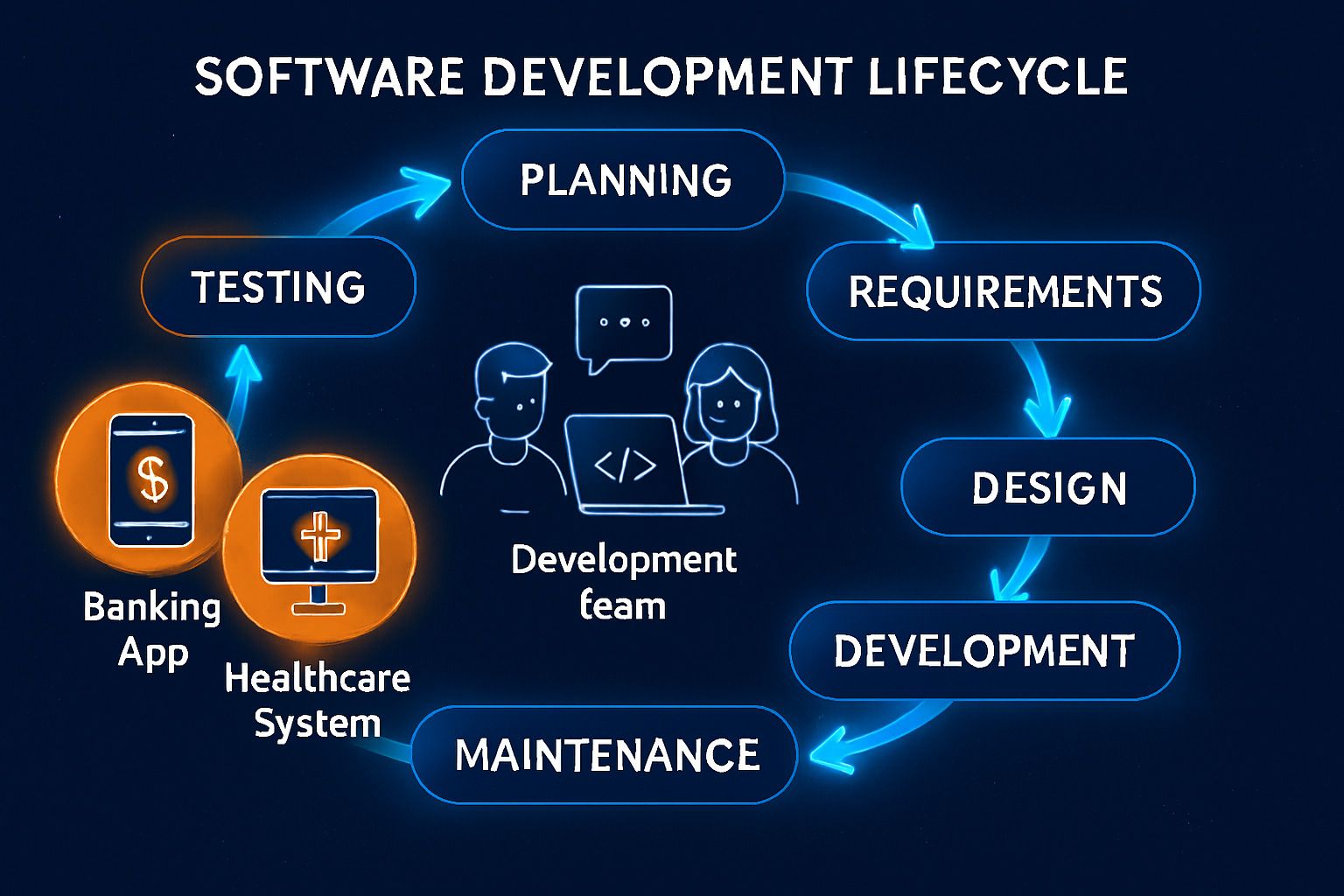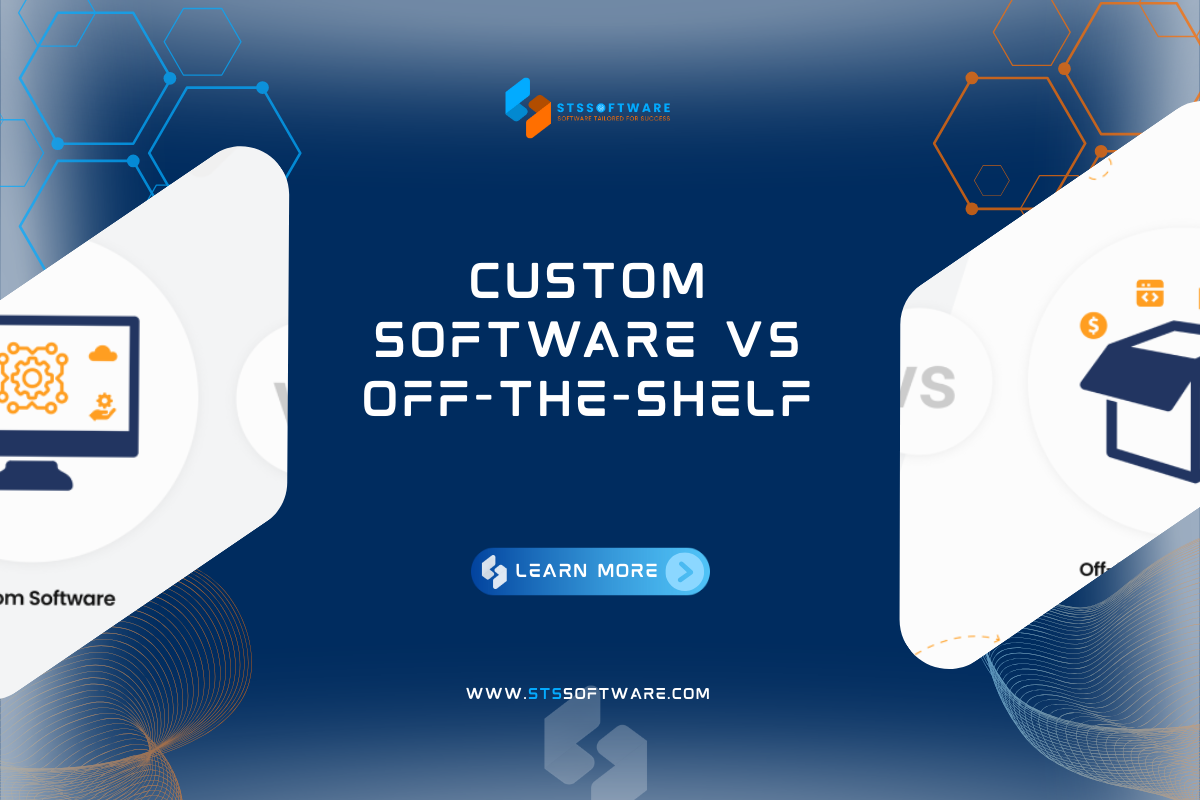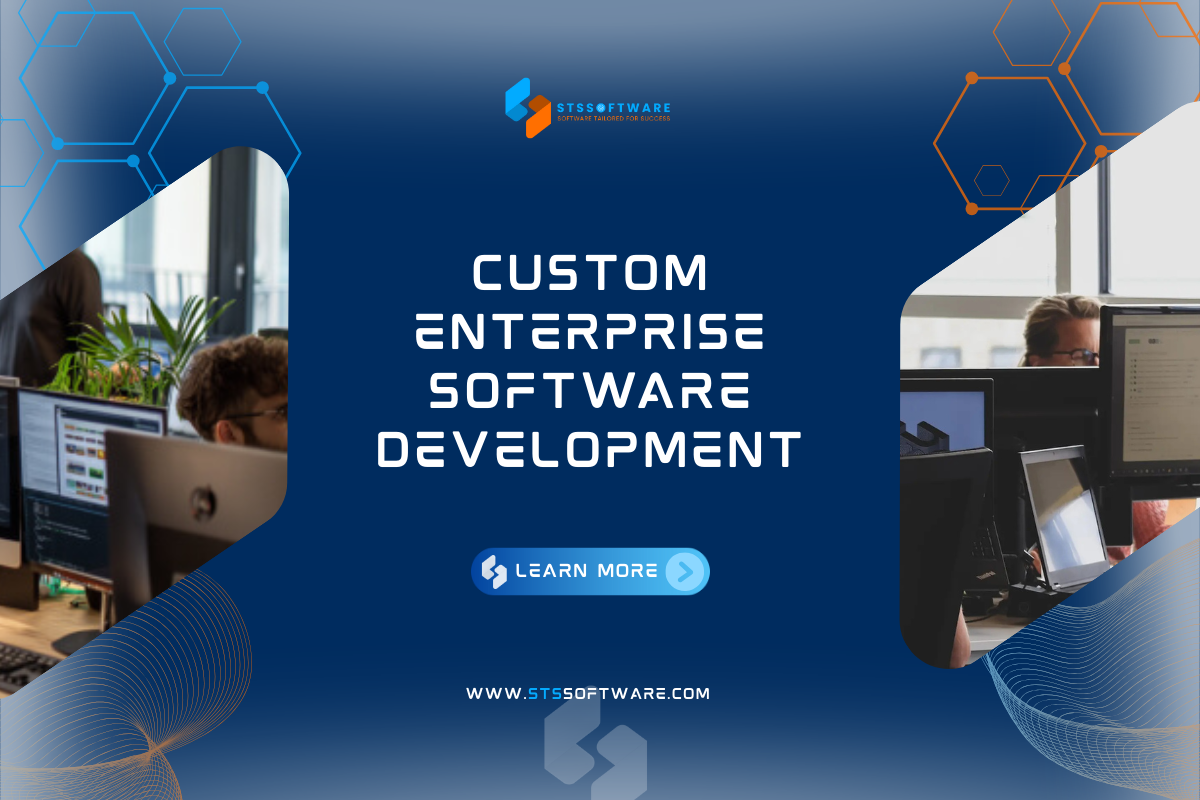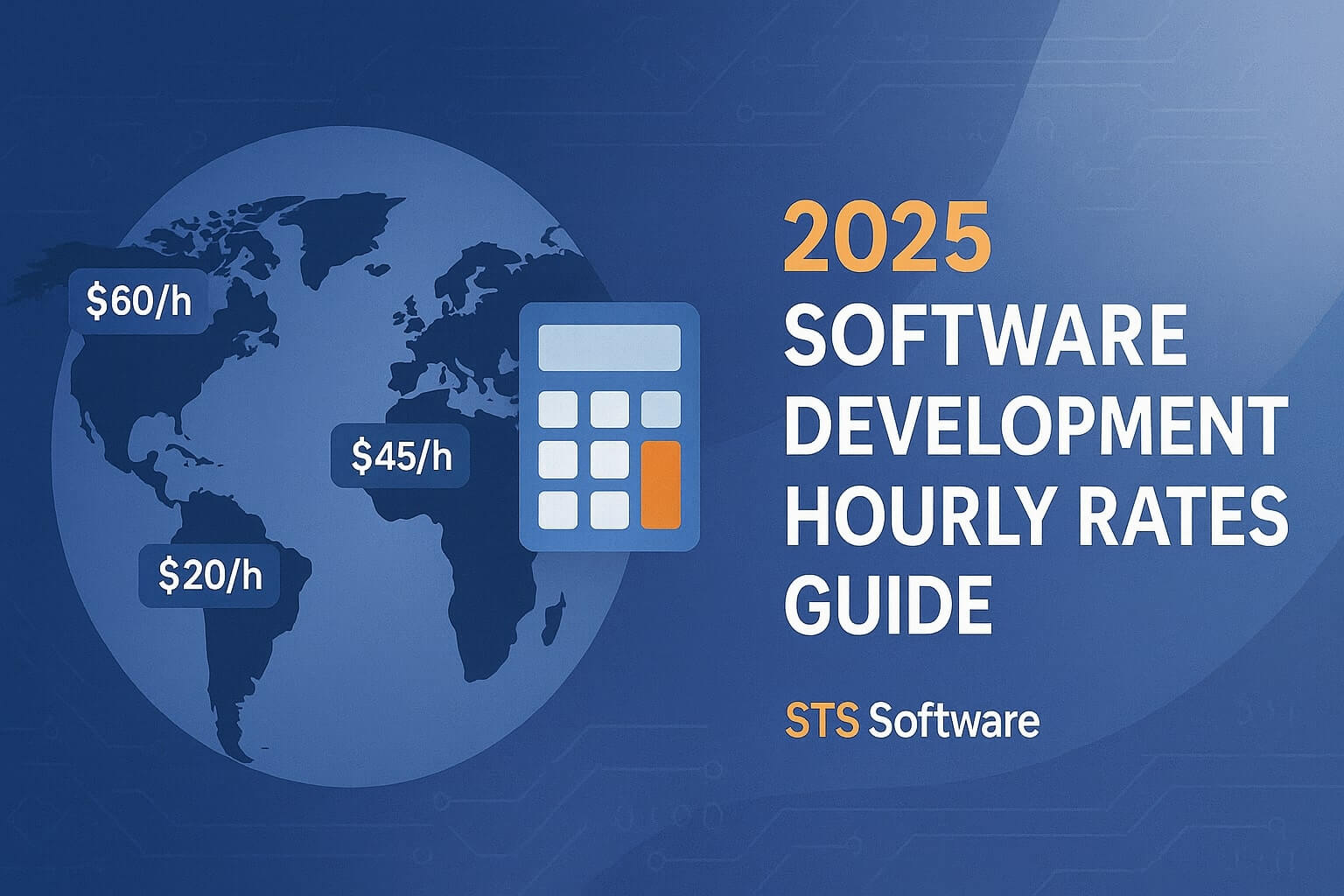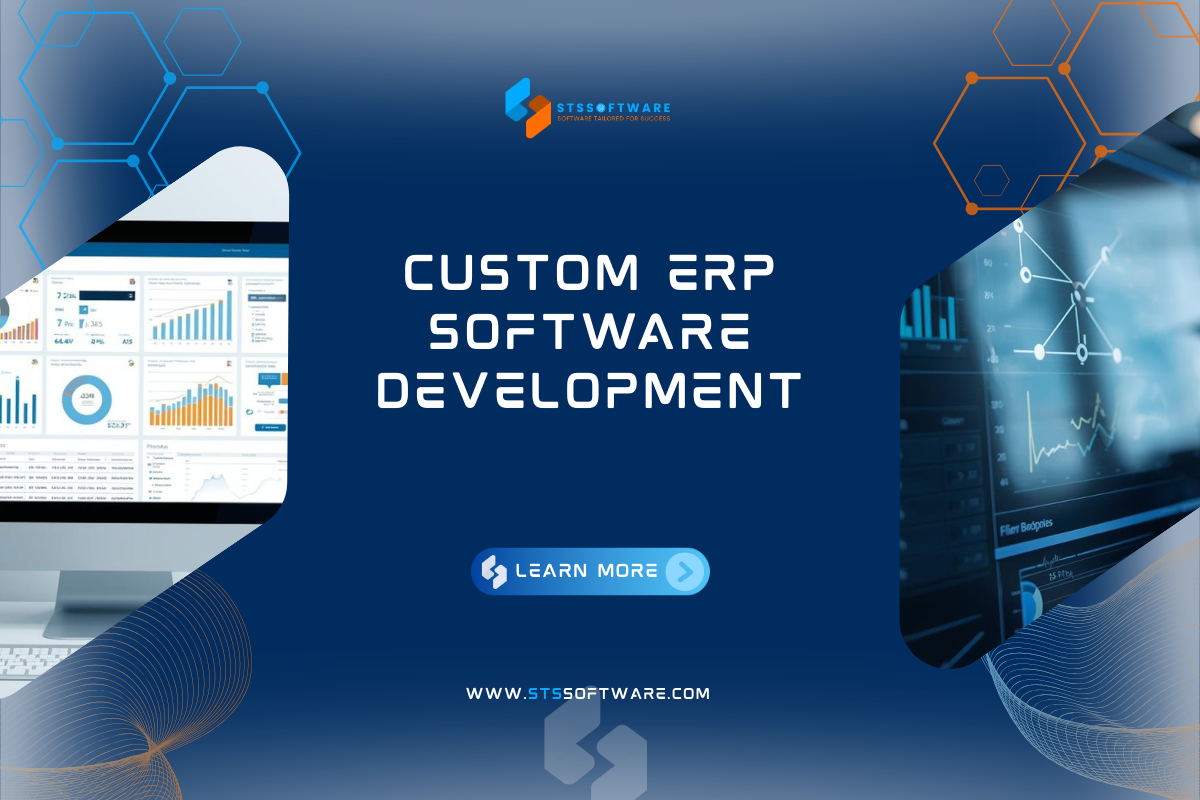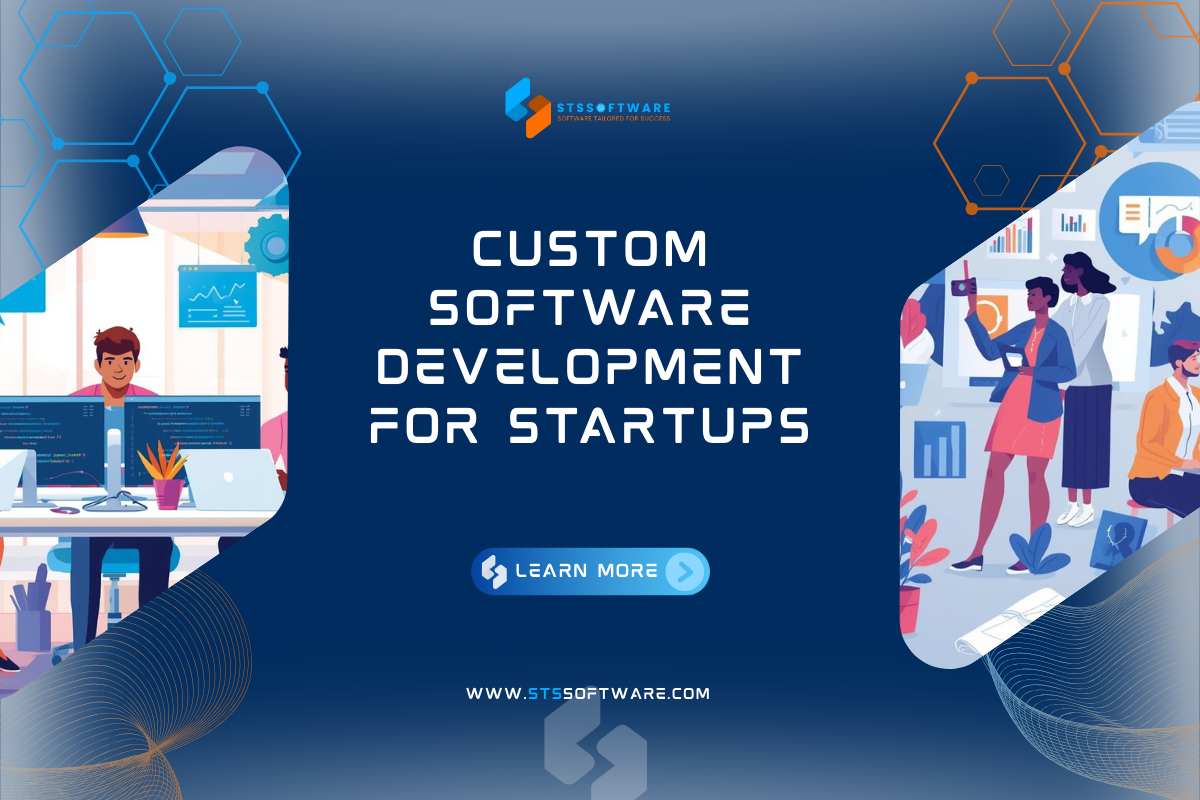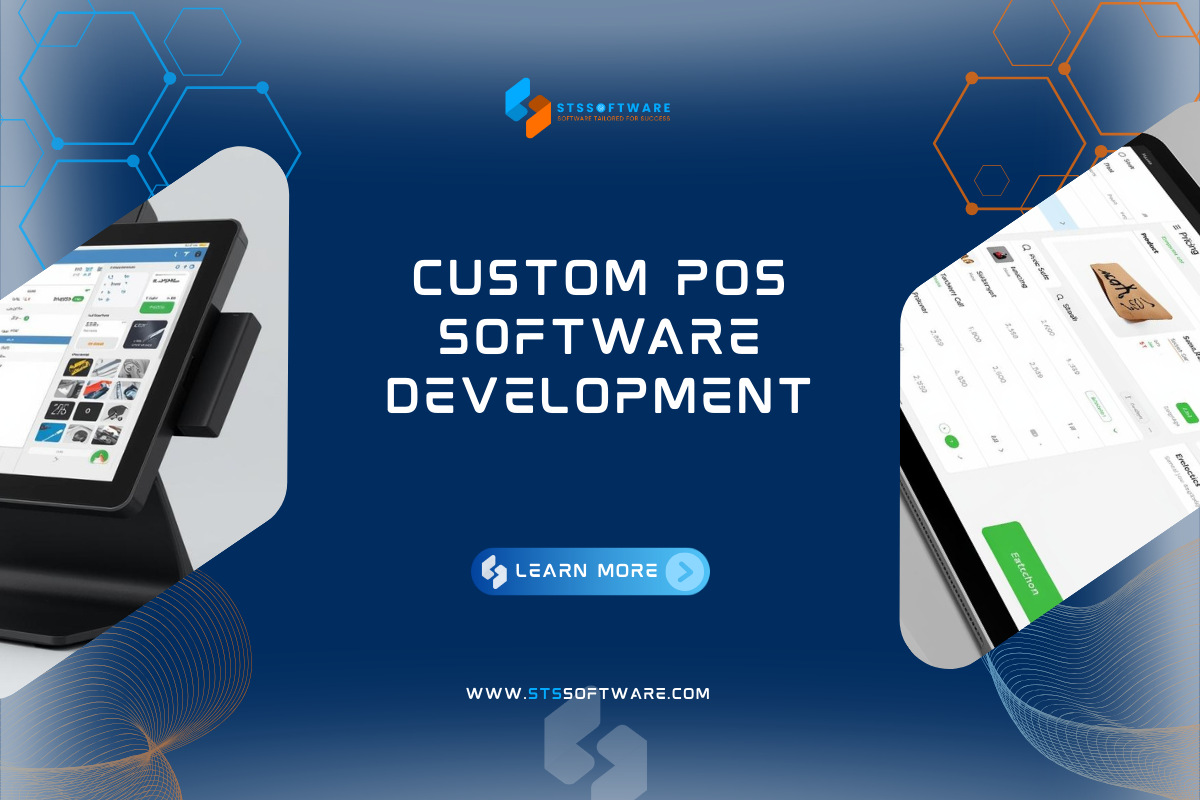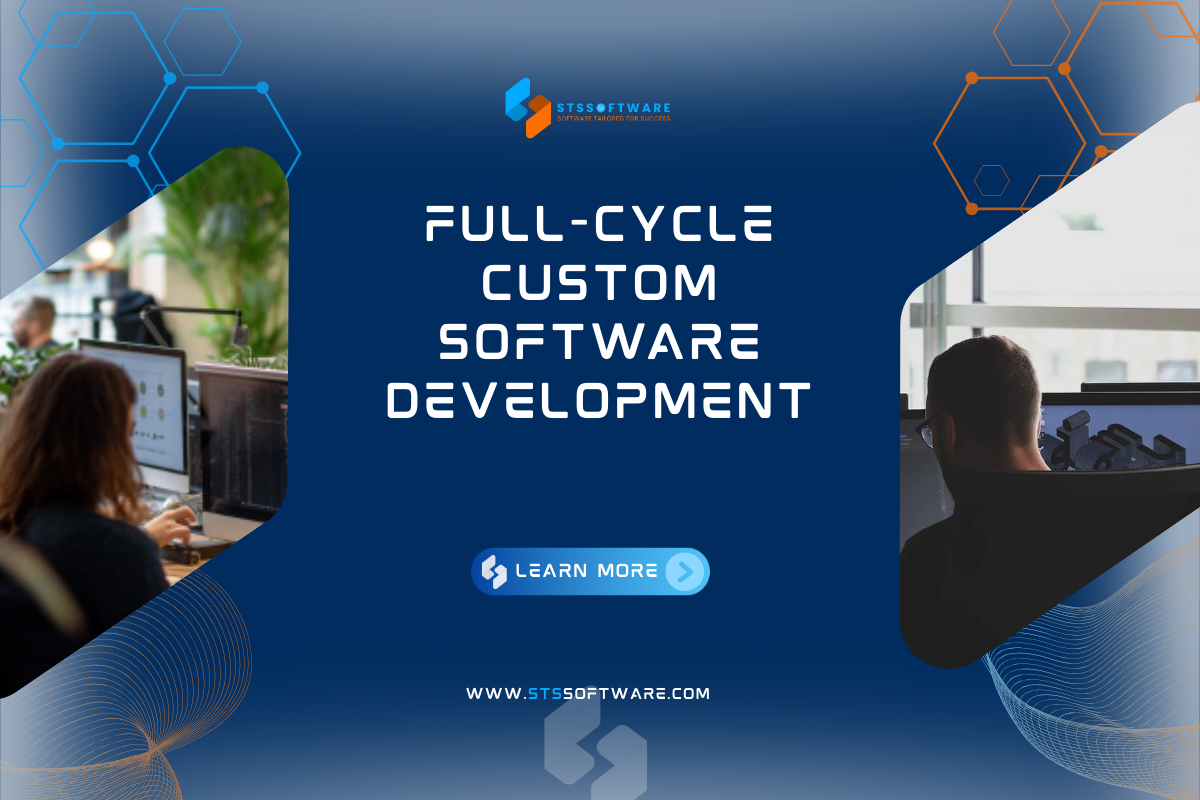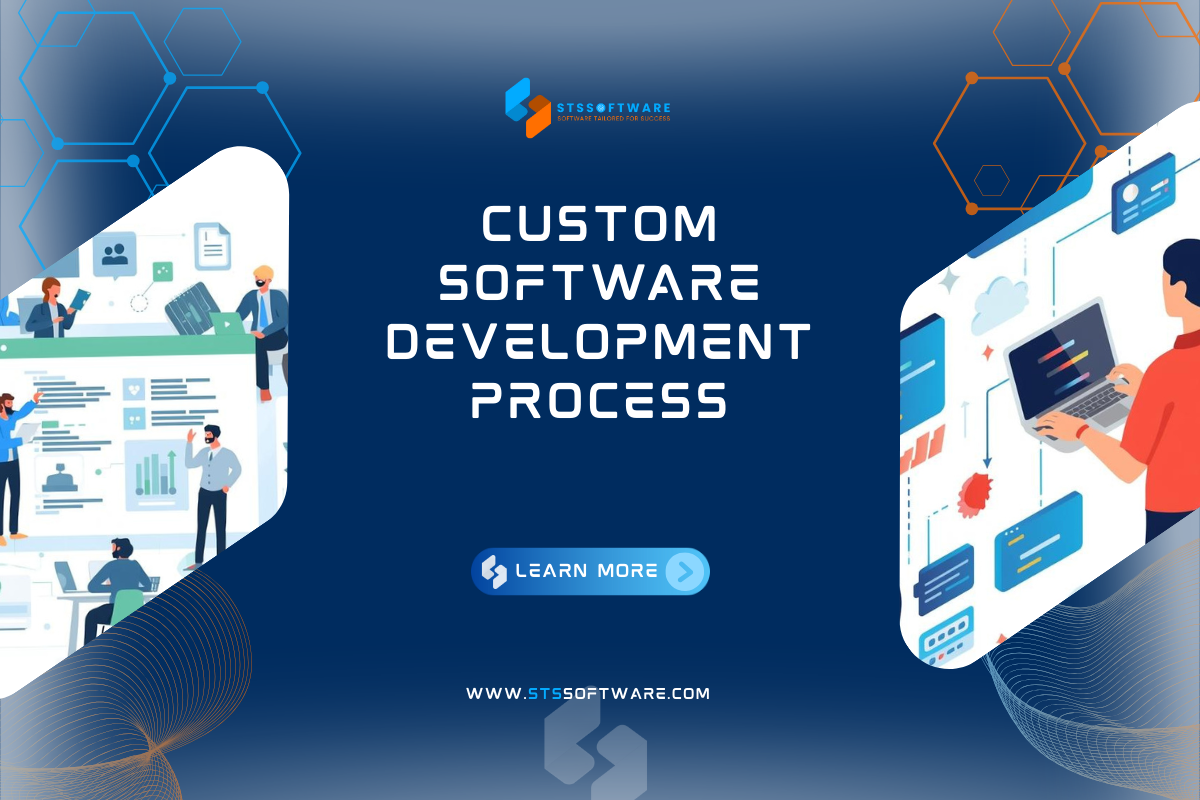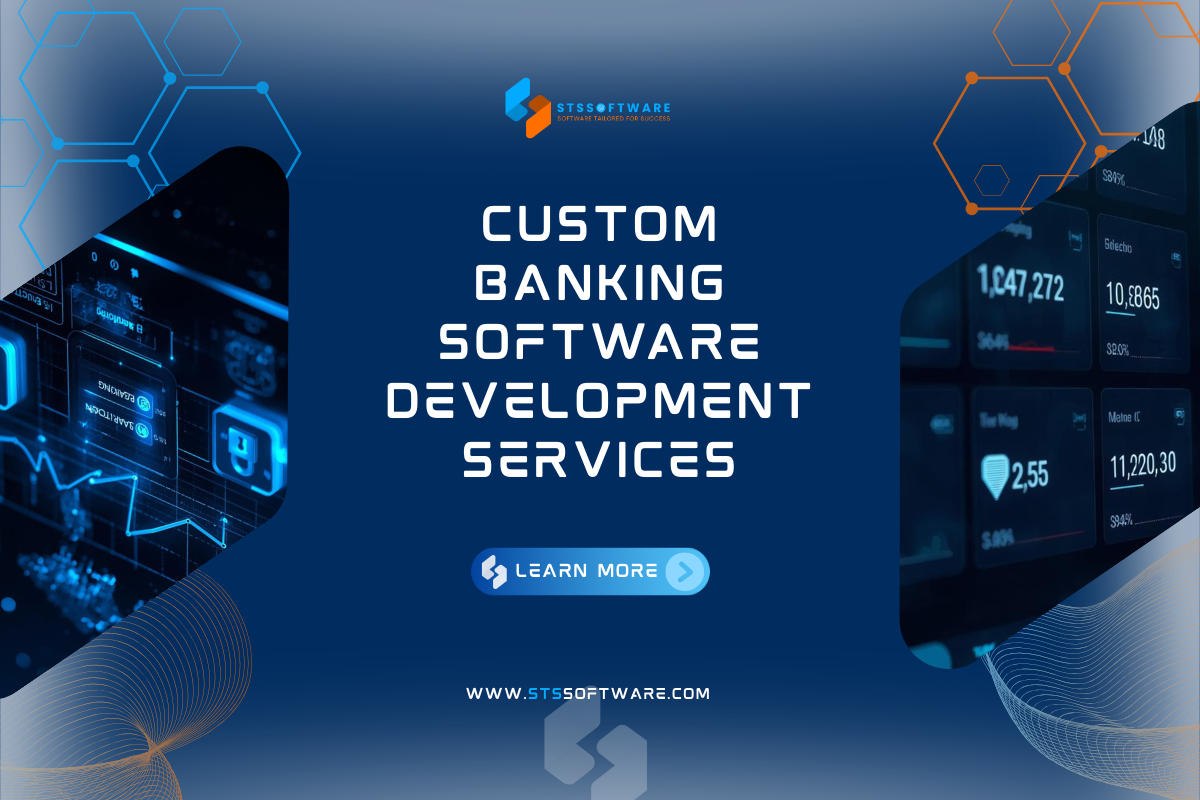Software development life cycle examples demonstrate how systematic methodologies transform business requirements into functional software solutions. STS Software has implemented SDLC processes across 800+ projects, delivering measurable results for healthcare, fintech, and enterprise clients over 13+ years.
Real-world SDLC implementation provides structured frameworks that reduce development risks, optimize resource allocation, and ensure consistent quality delivery. Modern enterprises require proven methodologies that align technical execution with business objectives while maintaining scalability and security standards.
Key Takeaways
STS Software’s software development life cycle examples showcase proven implementation strategies that deliver predictable outcomes:
- 7-phase SDLC process covering planning, requirements, design, development, testing, deployment, and maintenance
- Multiple SDLC models, including Agile, Waterfall, DevOps, and Spiral methodologies, tailored to project requirements
- Real-world case studies from banking, healthcare, e-commerce, and enterprise software implementations
- Measurable success metrics showing 40% faster delivery and 60% reduction in post-deployment issues
- Industry-specific adaptations meeting compliance requirements for HIPAA, PCI-DSS, and SOX standards
- Comprehensive toolchain integration supporting automated testing, continuous deployment, and performance monitoring
- Expert implementation by 350+ certified software engineers specializing in modern development practices
Understanding SDLC Through Real-World Applications
Software development life cycle examples provide concrete frameworks for transforming business ideas into production-ready software systems. The SDLC methodology ensures systematic progression through defined phases, each with specific deliverables, quality gates, and success criteria.
STS Software implements customized SDLC approaches based on project complexity, regulatory requirements, and business objectives. Our methodology selection considers factors including timeline constraints, team expertise, integration requirements, and stakeholder involvement levels.
Proper SDLC implementation reduces project failure rates from 70% to less than 15% through structured planning and risk management.
Modern SDLC implementations incorporate DevOps practices, cloud-native architectures, and automated quality assurance processes. These enhancements accelerate delivery cycles while maintaining security and compliance standards required for enterprise applications.
Visit our services: Custom Software Development Services
Core SDLC Phases with Practical Examples
Each SDLC phase contributes essential value to overall project success through specific activities, deliverables, and quality checkpoints. Software development life cycle examples demonstrate how systematic execution ensures comprehensive coverage of technical and business requirements.
STS Software’s phase-based approach includes parallel activities, continuous feedback loops, and iterative refinements that optimize development efficiency. Our proven methodology adapts to project-specific requirements while maintaining consistent quality standards.
Planning and Requirements Analysis
The planning phase establishes project foundation through stakeholder analysis, scope definition, and resource allocation strategies. Requirements analysis involves detailed business process examination, user story development, and technical constraint identification.
Real-world example: For a healthcare electronic records system, STS Software conducted a 6-week planning involving 15 stakeholders across clinical, administrative, and IT departments. The analysis identified 200+ functional requirements, HIPAA compliance needs, and integration with 12 existing medical systems.
| Planning Activity | Duration | Key Deliverables | Success Metrics |
|---|---|---|---|
| Stakeholder Analysis | 1-2 weeks | Stakeholder matrix, communication plan | 100% stakeholder identification |
| Requirements Gathering | 2-4 weeks | SRS document, user stories | 95% requirement completeness |
| Feasibility Study | 1-2 weeks | Technical/economic analysis | ROI validation |
| Project Charter | 1 week | Scope, timeline, budget | Executive approval |
System Design and Architecture
Design phase transforms requirements into technical specifications, including system architecture, database design, user interface mockups, and integration specifications. This phase establishes the technical foundation for development and implementation.
Banking application example: STS Software designed a microservices architecture for a digital banking platform supporting 50,000+ concurrent users. The design included an API gateway, authentication services, transaction processing, and real-time fraud detection with 99.9% uptime requirements.
Development and Implementation
The development phase involves coding, unit testing, code reviews, and continuous integration practices. Software development life cycle examples show how structured development ensures code quality, maintainability, and performance optimization.
E-commerce platform implementation: Our 12-engineer team delivered a responsive web application and mobile apps using React, Node.js, and cloud infrastructure. The 16-week development cycle included automated testing, daily builds, and weekly stakeholder demonstrations.
Popular SDLC Models with Real Examples
Different SDLC models address varying project characteristics, risk profiles, and business requirements. Software development life cycle examples demonstrate when to apply specific methodologies for optimal results.
STS Software selects appropriate SDLC models based on project complexity, timeline constraints, regulatory requirements, and stakeholder involvement preferences. Our expertise spans multiple methodologies, enabling optimal approach selection for each engagement.
Agile methodologies deliver 25% faster results for projects with evolving requirements, while Waterfall ensures 40% better compliance for regulated industries.
Waterfall Model Implementation
Waterfall methodology follows sequential phases with formal deliverables and approval gates between stages. This approach suits projects with well-defined requirements, regulatory compliance needs, and fixed-scope deliverables.
STS Software implemented a trading platform using the Waterfall methodology due to SEC regulatory requirements. The 18-month project included comprehensive documentation, formal testing procedures, and regulatory approval processes.
Agile Development Approach
Agile methodology emphasizes iterative development, continuous stakeholder feedback, and adaptive planning. Sprint-based delivery enables rapid value delivery and requirement refinement throughout development.
Healthcare application case: Patient portal development using 2-week sprints delivered functional modules every month. Continuous stakeholder feedback enabled feature refinement and user experience optimization throughout the 8-month project.
DevOps-Integrated SDLC
DevOps integration combines development and operations through automated pipelines, continuous monitoring, and infrastructure-as-code practices. This approach accelerates deployment frequency while maintaining system reliability.
Enterprise CRM implementation: STS Software delivered a CRM system with an automated deployment pipeline, reducing release cycles from monthly to weekly. Continuous monitoring and automated rollback procedures ensured 99.8% system availability.
Real-World SDLC Implementation Case Studies
Software development life cycle examples from STS Software’s portfolio demonstrate practical application across diverse industries and project types. These case studies highlight methodology adaptation, challenge resolution, and measurable outcomes.
Each implementation showcases specific SDLC phase execution, tool utilization, team collaboration patterns, and quality assurance processes. Real-world examples provide actionable insights for enterprise decision-makers evaluating development approaches.
Healthcare Electronic Records System
A large hospital network required a comprehensive EHR system to replace legacy applications across 5 facilities. The 18-month project involved a 25-person development team and complex integration requirements.
SDLC implementation included an 8-week planning phase with clinical workflow analysis, a 12-week design phase incorporating HIPAA compliance requirements, and phased deployment across facilities. Agile methodology enabled iterative refinement based on clinical user feedback.
Project Results:
- 40% reduction in patient data retrieval time
- 100% HIPAA compliance certification
- 95% user adoption within 6 months
- $2.3M annual operational savings
Banking Digital Transformation
Regional bank modernized legacy core banking system to support digital banking initiatives and regulatory compliance. The project required zero-downtime migration and integration with existing ATM networks.
STS Software implemented hybrid SDLC approach combining Waterfall for compliance documentation and Agile for user interface development. Phased migration strategy maintained operational continuity while delivering enhanced functionality.
Key Achievements:
- 60% faster transaction processing
- 99.9% system uptime during migration
- 250% increase in mobile banking adoption
- Full PCI-DSS compliance certification
E-commerce Platform Scaling
High-growth retailer required platform modernization to support 10x traffic increases and international expansion. Legacy monolithic architecture limited scalability and feature development speed.
Microservices architecture implementation using DevOps methodology enabled independent service scaling and deployment. Container-based infrastructure provided cost optimization and geographic distribution capabilities.
Industry-Specific SDLC Implementations
Software development life cycle examples vary significantly across industries due to regulatory requirements, security standards, and operational constraints. STS Software adapts SDLC methodologies to address sector-specific challenges and compliance obligations.
Industry specialization ensures a deep understanding of domain requirements, regulatory frameworks, and operational processes that influence development decisions. Specialized approaches optimize delivery while maintaining compliance and security standards.
Healthcare Software Development
Healthcare SDLC requires HIPAA compliance integration, medical device interoperability, and clinical workflow optimization. Extended testing phases include security validation, performance testing under peak loads, and clinical user acceptance testing.
STS Software implements healthcare-specific quality gates including privacy impact assessments, security risk analysis, and clinical safety evaluations. Documentation requirements exceed standard software development due to regulatory audit needs.
| Healthcare SDLC Phase | Additional Requirements | Compliance Focus |
|---|---|---|
| Planning | Clinical workflow analysis | HIPAA risk assessment |
| Requirements | Medical terminology standards | Patient safety requirements |
| Design | Security architecture review | Data encryption standards |
| Development | Secure coding practices | Access control implementation |
| Testing | Clinical validation testing | Security penetration testing |
| Deployment | Phased clinical rollout | Audit trail verification |
Financial Services Applications
Fintech SDLC emphasizes security, regulatory compliance, and high-availability requirements. Development processes include threat modeling, penetration testing, and compliance verification throughout all phases.
Real-time transaction processing requirements demand specialized performance testing, load balancing architecture, and disaster recovery procedures. STS Software implements financial-grade security controls and monitoring systems.
Enterprise Software Solutions
Large-scale enterprise applications require extensive integration testing, change management processes, and rollback procedures. SDLC phases include organizational impact analysis and user training program development.
STS Software manages complex stakeholder ecosystems including IT departments, business units, and executive leadership. Governance frameworks ensure alignment between technical delivery and business objectives.
SDLC Phase Implementation Strategies
Interactive SDLC Phase Explorer
Explore real-world examples from STS Software’s 800+ successful projects
Effective software development life cycle examples demonstrate strategic approaches to phase execution that optimize resource utilization and delivery timelines. STS Software implements proven strategies that address common implementation challenges.
Phase overlap techniques, parallel work streams, and continuous feedback mechanisms accelerate overall delivery while maintaining quality standards. Strategic implementation reduces critical path dependencies and project risk factors.
Parallel Development Approaches
Simultaneous execution of compatible activities reduces overall project duration without compromising quality. Front-end and back-end development proceed concurrently while design and architecture definition continue.
STS Software coordinates parallel work streams through daily stand-ups, shared documentation platforms, and integration checkpoints. This approach typically reduces project duration by 25-35% compared to sequential execution.
Continuous Integration Practices
Automated build and testing pipelines enable rapid feedback on code quality and system integration. Daily builds identify integration issues early, while automated testing validates functionality and performance requirements.
CI/CD implementation includes code quality gates, security scanning, and automated deployment to staging environments. These practices reduce integration time from weeks to hours while improving overall code quality.
Quality Assurance Integration
Testing activities begin during the requirements phase through test case development and continue throughout development via automated testing execution. Early testing identification reduces defect resolution costs by 80% compared to post-development discovery.
STS Software implements risk-based testing strategies that prioritize critical functionality and high-impact scenarios. Automated regression testing enables continuous validation of system functionality throughout development cycles.
Tools and Technologies for SDLC Success
Modern software development life cycle examples leverage comprehensive toolchains that automate routine tasks, enforce quality standards, and provide project visibility. STS Software selects tools based on project requirements, team expertise, and integration capabilities.
Integrated development environments, project management platforms, and monitoring solutions provide end-to-end support for SDLC execution. Tool standardization across projects enables knowledge transfer and process optimization.
Development and Collaboration Tools
Version control systems, issue tracking platforms, and communication tools form the foundation of effective SDLC implementation. Git-based workflows enable distributed development while maintaining code integrity and change traceability.
STS Software standardizes on enterprise-grade tools, including GitHub Enterprise, Jira, and Slack, for seamless team collaboration. Integration between tools provides automated workflow management and progress visibility.
| Tool Category | Primary Tools | Key Benefits |
|---|---|---|
| Version Control | Git, GitHub Enterprise | Code integrity, branching strategies |
| Project Management | Jira, Azure DevOps | Task tracking, sprint planning |
| Communication | Slack, Microsoft Teams | Real-time collaboration |
| Documentation | Confluence, SharePoint | Knowledge management |
Testing and Quality Assurance
Automated testing frameworks, performance testing tools, and security scanning platforms ensure comprehensive quality validation. Test automation reduces manual effort while improving coverage and consistency.
Continuous testing integration provides immediate feedback on code changes, enabling rapid issue resolution. STS Software implements layered testing strategies, including unit tests, integration tests, and end-to-end scenario validation.
Deployment and Monitoring
Container orchestration, infrastructure automation, and monitoring platforms enable reliable deployment and operational management. DevOps toolchains automate deployment pipelines while providing rollback capabilities.
Cloud-native monitoring solutions provide real-time visibility into application performance, user experience, and system health. Proactive alerting enables rapid issue response and resolution.
Cost Optimization and ROI Measurement
Software development life cycle examples demonstrate significant cost optimization opportunities through structured implementation approaches. STS Software tracks comprehensive metrics that quantify SDLC value delivery and return on investment.
Proper SDLC implementation reduces total project costs by 30-40% through early issue detection, streamlined processes, and reduced rework requirements. Long-term maintenance costs decrease through improved code quality and documentation standards.
Development Cost Reduction
Systematic requirements analysis and design validation prevent costly late-stage changes that typically increase project costs by 200-500%. Early stakeholder involvement and prototype validation ensure alignment before development investment.
Automated testing and continuous integration reduce defect resolution costs while accelerating delivery timelines. STS Software’s SDLC implementation typically achieves 25% faster delivery compared to ad-hoc development approaches.
Structured SDLC implementation reduces post-deployment maintenance costs by 45% through improved code quality and comprehensive documentation.
Quality Improvement Metrics
Defect density reduction, test coverage improvement, and performance optimization demonstrate quality improvements from systematic SDLC implementation. These metrics directly correlate with reduced support costs and improved user satisfaction.
STS Software tracks quality metrics including code coverage percentages, defect escape rates, and performance benchmarks. Consistent improvement trends validate the effectiveness of the SDLC process and continuous optimization opportunities.
Business Value Delivery
Time-to-market acceleration, feature delivery velocity, and user adoption rates measure business value creation through effective SDLC implementation. These metrics demonstrate competitive advantages and revenue generation capabilities.
Customer satisfaction improvements and operational efficiency gains provide long-term business value beyond initial development investment. STS Software’s SDLC approach consistently delivers measurable business outcomes for enterprise clients.
Modern SDLC Trends and Innovations
Contemporary software development life cycle examples incorporate emerging technologies and methodologies that enhance development effectiveness. STS Software adapts SDLC processes to leverage artificial intelligence, cloud-native architectures, and low-code platforms.
Innovation adoption requires careful evaluation of technology maturity, team capabilities, and project requirements. Strategic innovation integration provides competitive advantages while maintaining delivery reliability and quality standards.
AI-Enhanced Development
Machine learning integration in testing, code review, and deployment optimization accelerates development cycles while improving quality. AI-powered tools provide intelligent recommendations for code improvement and defect prevention.
STS Software implements AI-enhanced code analysis, automated test generation, and intelligent monitoring solutions. These capabilities reduce manual effort while providing insights that improve development decisions and outcomes.
Cloud-Native SDLC
Container-based development, serverless architectures, and cloud-native toolchains enable scalable and cost-effective development approaches. Cloud platforms provide development environments that mirror production systems, reducing deployment risks.
Infrastructure-as-code practices ensure consistent environments across development, testing, and production phases. STS Software leverages cloud-native capabilities to optimize resource utilization and accelerate deployment cycles.
Low-Code Integration
Visual development platforms and low-code tools accelerate application development for specific use cases while maintaining professional development standards. Strategic low-code adoption optimizes development velocity without compromising system quality.
STS Software evaluates low-code platforms for rapid prototyping, business process automation, and user interface development. Integration with traditional development approaches provides flexibility and optimization opportunities.
Frequently Asked Questions
What are the main phases of the software development life cycle?
The software development life cycle consists of seven core phases: Planning and Analysis, Requirements Definition, System Design, Development and Coding, Testing and Quality Assurance, Deployment and Release, and Maintenance and Support. Each phase has specific deliverables, quality gates, and success criteria that ensure systematic progression from concept to production. STS Software customizes phase implementation based on project requirements, regulatory compliance needs, and stakeholder preferences while maintaining consistent quality standards across all implementations.
How do you choose the right SDLC model for a project?
SDLC model selection depends on project characteristics, including requirement stability, regulatory compliance needs, timeline constraints, and stakeholder involvement preferences. Waterfall methodology suits projects with fixed requirements and extensive documentation needs, while Agile approaches optimize projects with evolving requirements and frequent stakeholder feedback. STS Software evaluates factors including project complexity, team expertise, integration requirements, and risk tolerance to recommend optimal methodology selection that maximizes project success probability.
What are some real-world examples of SDLC implementation?
STS Software has implemented SDLC processes across diverse industries, including healthcare electronic records systems, banking digital transformation projects, and e-commerce platform modernization. Healthcare implementations require HIPAA compliance integration and clinical workflow optimization, while financial services projects emphasize security, regulatory compliance, and high-availability requirements. E-commerce platforms focus on scalability, performance optimization, and user experience enhancement through systematic SDLC execution.
How long does each SDLC phase typically take?
SDLC phase duration varies based on project complexity, scope, and the selected methodology. Planning phases typically require 2-4 weeks, requirements definition takes 3-6 weeks, design phases last 4-8 weeks, development consumes 8-16 weeks, testing requires 3-6 weeks, deployment takes 1-3 weeks, and maintenance continues throughout the system lifecycle. STS Software provides detailed timeline estimates based on specific project requirements, team size, and complexity factors while maintaining flexibility for iterative refinement.
What tools are essential for successful SDLC implementation?
Modern SDLC implementation requires integrated toolchains including version control systems (Git), project management platforms (Jira), development environments (VS Code), testing frameworks (Selenium), deployment automation (Jenkins), and monitoring solutions (Grafana). STS Software standardizes on enterprise-grade tools that provide automation, collaboration, and visibility throughout the development lifecycle. Tool selection considers integration capabilities, team expertise, security requirements, and scalability needs for optimal development efficiency.
How do you measure SDLC success and ROI?
SDLC success measurement includes quantitative metrics such as delivery timeline adherence, defect density reduction, test coverage improvement, and cost optimization achievement. Business value metrics encompass time-to-market acceleration, user adoption rates, operational efficiency gains, and customer satisfaction improvements. STS Software tracks comprehensive KPIs including development velocity, quality metrics, and business outcomes to demonstrate ROI and identify continuous improvement opportunities.
Conclusion
Software development life cycle examples demonstrate how systematic methodologies transform business requirements into successful software solutions that deliver measurable value. STS Software’s proven SDLC implementation approach combines industry best practices with project-specific customization to ensure optimal outcomes.
Our comprehensive methodology encompasses planning and analysis, requirements definition, system design, development, implementation, quality assurance, deployment management, and ongoing maintenance support. With 13+ years of experience delivering 800+ successful projects for 300+ global clients, STS Software provides the expertise and methodology necessary for enterprise software success.
Contact STS Software today to explore how our proven SDLC methodologies can accelerate your software development initiatives while ensuring quality, compliance, and business value delivery. Our team of 350+ certified software engineers specializes in modern development practices that optimize time-to-market, reduce project risks, and maximize return on investment.



